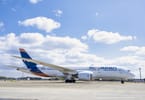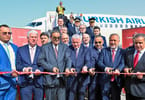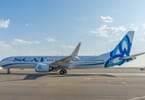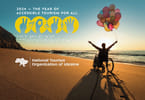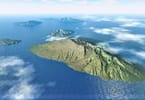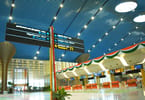TOKYO, Japan (August 11, 2008) – From today, August 11 2008, the JAL Group starts trials of User Preferred Route (UPR) for flights between Japan and Hawaii. If adopted on Hawaii routes, this flight path planning system will enable the airline group to reduce both its fuel consumption and CO2 emissions, helping to reduce its fuel bill, as well as its environmental footprint.
A User Preferred Route is a unique flight path for each aircraft instead of following the conventional approach of flying along predetermined aviation routes set by air traffic controllers (ATC). Depending upon the prevailing weather conditions at the time, UPR allows an airline to fly along what it judges to be the most efficient route for each type of aircraft used. The system helps to improve operational efficiency by providing each aircraft with an optimal flight path and shortening flight times.
Presently, the JAL Group is allowed to use two flight paths between Japan and Hawaii that are prepared each day by air traffic controllers based on weather forecasts provided 24 hours in advance of actual flight departure. As the weather conditions can change by the time of a flight’s departure, and there are only 2 flight paths routes to choose from, the aircraft may not be able to fly the most optimal routing. The most optimal flight path will also differ depending on the type of aircraft used.
The JAL Group has decided to carry out the trials of UPR, as technical advancements in aircraft devices and ATC systems have made it easier to more accurately pinpoint an aircraft’s position in the air, and as the US Federal Aviation Administration and the Japanese Ministry of Land, Infrastructure, Transport and Tourism (MLITT) have been conducting since November 2007 continuous safety examinations of the usage of UPR on Japan-Hawaii routes.
The airline group will start trials of UPR for scheduled flights serving on 4 routes between Japan and Hawaii: Narita-Honolulu, Narita-Kona, Osaka-Honolulu and Nagoya-Honolulu. UPR will also be trialed on any extra scheduled flights operated during peak holiday periods and on charter flights operated between Japan and Hawaii. In total, the JAL Group operates approximately 4700 one-way flights per year on these routes.
If User Preferred Route were used on all of its flights operating between Japan and Hawaii, the JAL Group has estimated that it could potentially reduce its fuel consumption by about 3.4 million lbs. (1.93 million liters, 9,600 oil drums), resulting in a CO2 emissions reduction of 4,700 tons and a reduction in fuel costs of 180 million yen per year.
WHAT TO TAKE AWAY FROM THIS ARTICLE:
- The JAL Group has decided to carry out the trials of UPR, as technical advancements in aircraft devices and ATC systems have made it easier to more accurately pinpoint an aircraft’s position in the air, and as the US Federal Aviation Administration and the Japanese Ministry of Land, Infrastructure, Transport and Tourism (MLITT) have been conducting since November 2007 continuous safety examinations of the usage of UPR on Japan-Hawaii routes.
- As the weather conditions can change by the time of a flight’s departure, and there are only 2 flight paths routes to choose from, the aircraft may not be able to fly the most optimal routing.
- Presently, the JAL Group is allowed to use two flight paths between Japan and Hawaii that are prepared each day by air traffic controllers based on weather forecasts provided 24 hours in advance of actual flight departure.





